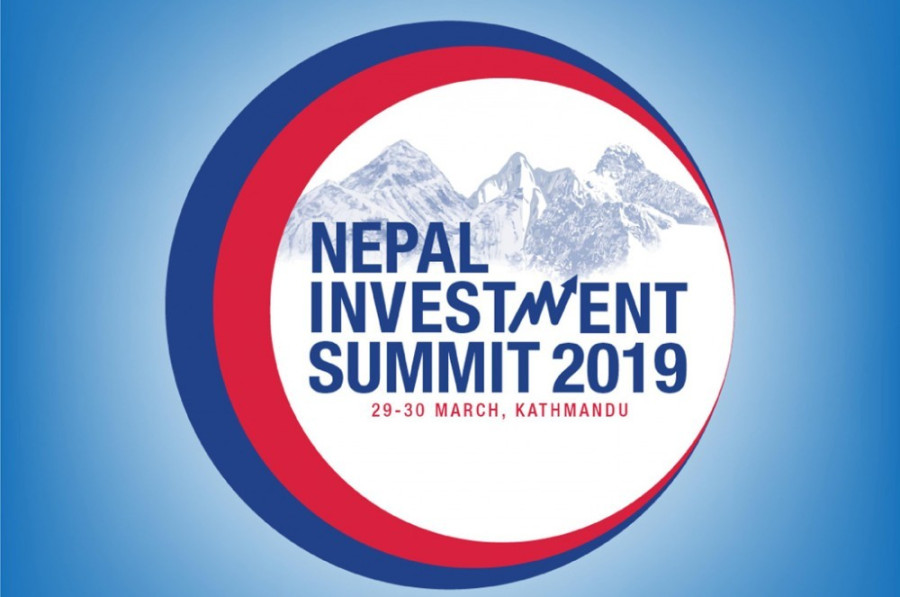Money
Nepal secures nearly $12 billion from Investment Summit 2019
Of the 50 infrastructure projects, 20 are still in the IBN basket as the board did not receive any proposals from investors.
Prahlad Rijal
Ten months after showcasing 50 infrastructure projects in Investment Summit and after one deadline extension to prospective investors to submit the proposals, the Investment Board Nepal has finally completed the prequalification of companies which are vying to bag 14 such projects.
As per board data, officials have shortlisted proposals for seven agricultural infrastructure projects, five hydroelectric schemes, much-touted Nijgadh International Airport and Kathmandu Outer Ring Road Project, with a combined estimated cost of $11.88 billion.
Read: Here is what you need to know about Nepal Investment Summit
And, from the list of 14 showcased projects, the board has selected a joint venture of Hydroelectricity Investment and Development Company and Power China to carry out detailed feasibility studies of the 756-megawatt Tamor Storage Hydroelectric Project and has signed Memorandum of Understandings with two companies for detailed study of Rs13 billion multimodal logistics park at industrial towns and trade transit points of Biratnagar, Birgunj and Bhairahawa.
Out of the total applications, the board disqualified 16 proposals and 20 of the total projects are still in the IBN basket as the board did not receive any proposals from investors.
“It is expected that once the projects move towards implementation, it will add to the infrastructure development in sectors of energy, industry, transportation and agriculture, among others,” said Balaram Rijyal, joint secretary of the Office of the Investment Board of Nepal. “At present, the board is also facilitating and implementing 9 infrastructure projects worth Rs565 billion.”
Out of the nine ongoing projects, construction works of 900-megawatt Arun-III being developed by Indian state-owned SJVN at the cost of $1040 million in eastern Nepal are thirty percent complete, $360 million Hongshi Shivam Cement Factory is under operation and planning the second phase of expansion, $140 million Huaxin Narayani Cement is carrying out construction works, informed the Board.
“At a time when the country has become self-reliant in cement and clinker, we are still receiving proposals for new cement factories despite objections from domestic producers,” said Maha Prasad Adhikari, chief executive officer of IBN. “A few years back, we were not able to procure high-quality cement and the price was high compared to regional markets but with foreign plants starting operations in Nepal, we will get high-quality cement and the market has also seen a price correction.”
According to Adhikari, the board is positive on the prospect of facilitating more foreign cement plants in line with the government’s target to make cement an exportable commodity and correct the balance of payments.
When asked about the controversy surrounding the public land acquisition by Huaxin Narayani Cement, the board CEO said that district level, IBN and respective ministry authorities have begun processes to legalise and regulate the acquisition and construction works at the plant site in Dhading have not stopped and the Chinese developer has been directed to undertake risk mitigation measures at the site.
The investment board also received 15 applications for unsolicited projects during the investment summit and 10 of such uncalled projects have moved forward to carry out prerequisite studies for implementation.
One of these is the $105 million Motor Vehicle Assembly and Manufacturing Plant for which the board has recently signed a project implementation agreement with Korean developer, Motrex, who officials say has plans to start assembling vehicle infotainment systems in the first phase and assemble vehicles to serve the South-Asian market and possibly offer automobiles at a lower cost in Nepal.
According to the board, it is also awaiting formal proof of the power offtake agreement between Indian developer GMR and the government of Bangladesh to extend the deadline for financial closure of the 900-megawatt export-oriented Upper Karnali hydroelectric project.
“Although we have already extended the financial closure deadline twice for the Indian developer and have not extended it since last year, the project development agreement with the Indian developer is still alive,” said Adhikari. “There were multiple requests for deadline extensions but we were in wait and watch mode and did not mull agreement termination with GMR because this project will benefit the overall economy by paving the way for exporting Nepal’s electricity to Bangladesh.”




 5.47°C Kathmandu
5.47°C Kathmandu















